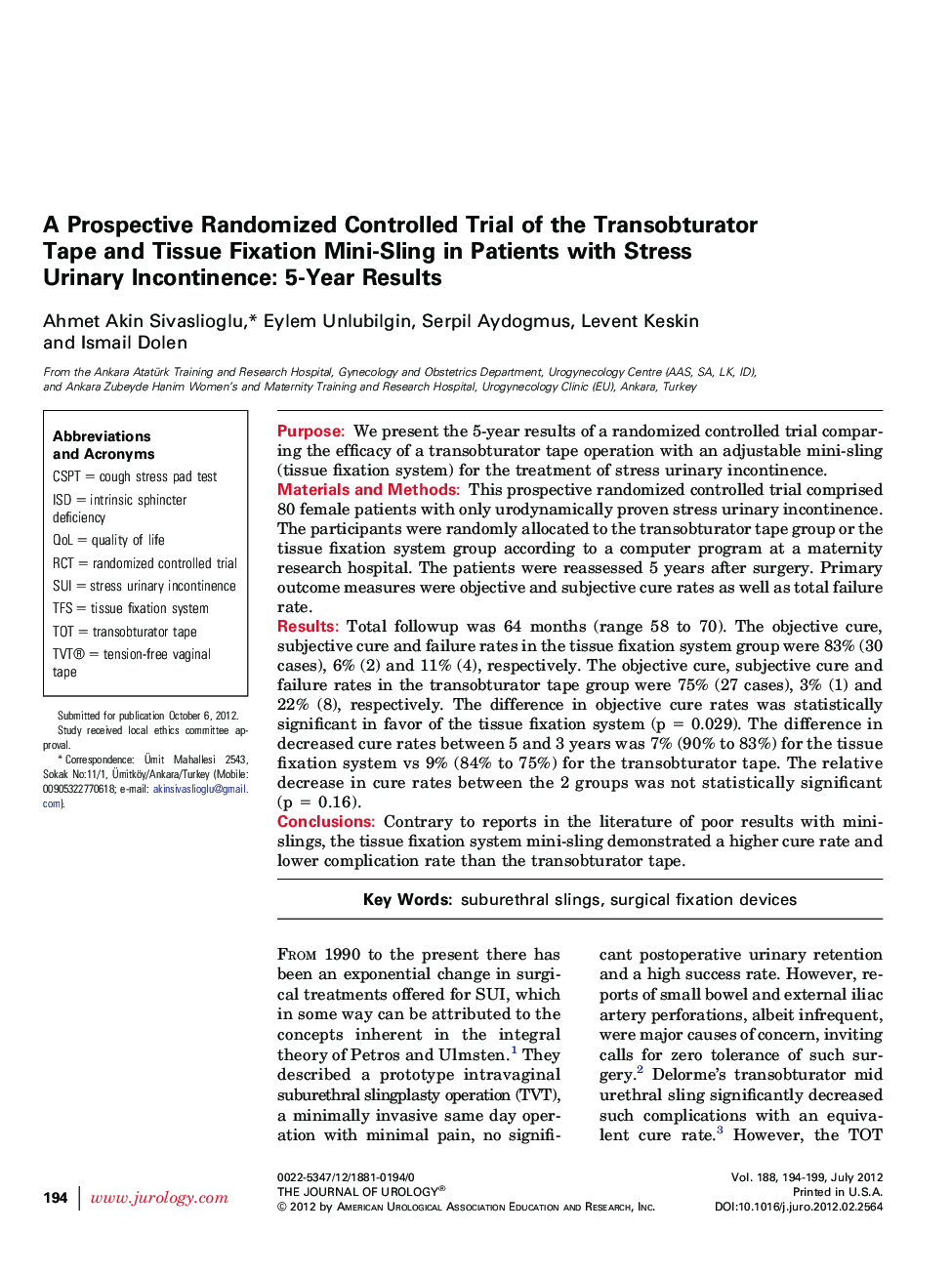| Article ID | Journal | Published Year | Pages | File Type |
|---|---|---|---|---|
| 3866714 | The Journal of Urology | 2012 | 6 Pages |
PurposeWe present the 5-year results of a randomized controlled trial comparing the efficacy of a transobturator tape operation with an adjustable mini-sling (tissue fixation system) for the treatment of stress urinary incontinence.Materials and MethodsThis prospective randomized controlled trial comprised 80 female patients with only urodynamically proven stress urinary incontinence. The participants were randomly allocated to the transobturator tape group or the tissue fixation system group according to a computer program at a maternity research hospital. The patients were reassessed 5 years after surgery. Primary outcome measures were objective and subjective cure rates as well as total failure rate.ResultsTotal followup was 64 months (range 58 to 70). The objective cure, subjective cure and failure rates in the tissue fixation system group were 83% (30 cases), 6% (2) and 11% (4), respectively. The objective cure, subjective cure and failure rates in the transobturator tape group were 75% (27 cases), 3% (1) and 22% (8), respectively. The difference in objective cure rates was statistically significant in favor of the tissue fixation system (p = 0.029). The difference in decreased cure rates between 5 and 3 years was 7% (90% to 83%) for the tissue fixation system vs 9% (84% to 75%) for the transobturator tape. The relative decrease in cure rates between the 2 groups was not statistically significant (p = 0.16).ConclusionsContrary to reports in the literature of poor results with mini-slings, the tissue fixation system mini-sling demonstrated a higher cure rate and lower complication rate than the transobturator tape.
